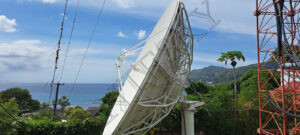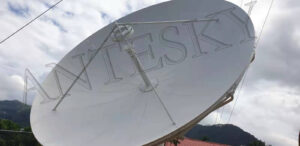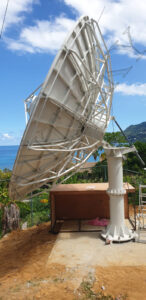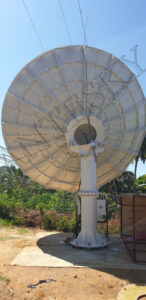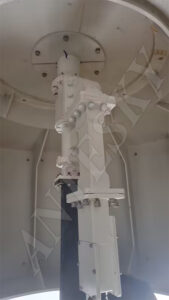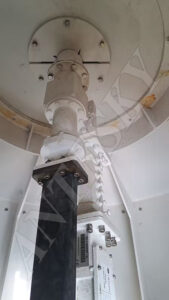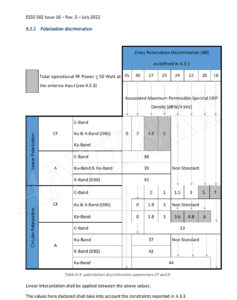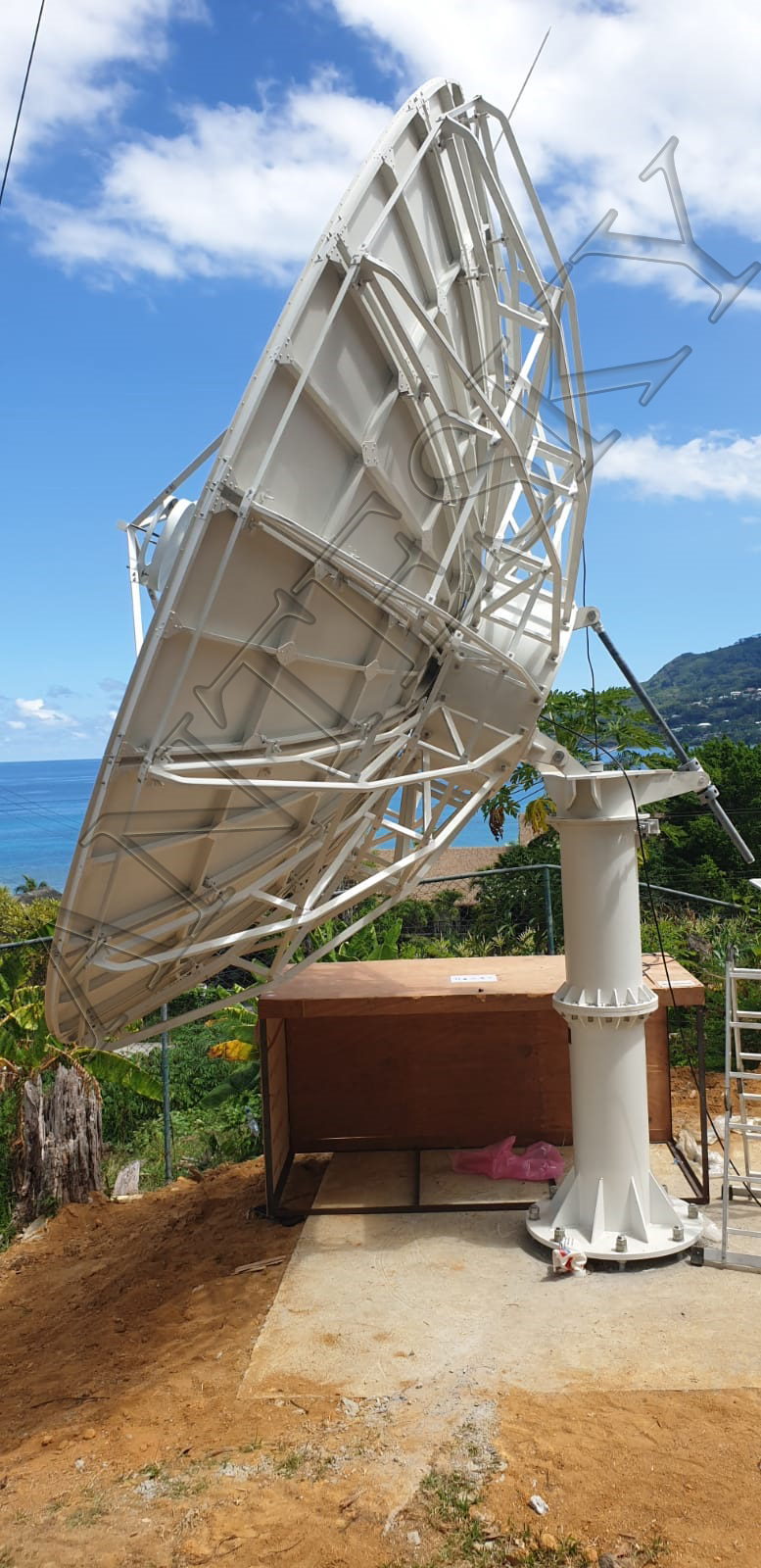
1. Customer feedback of Antesky 5.3m earth station antenna
In 2021, the customer ordered a set of 5.3-meter earth station antenna with C band circular polarization from Antesky for satellite communication. As one of our best-sell products, this 5.3m earth station antenna is in regular stock every year, so it is delivered quickly to customer site in Seychelles. After the customer received the goods, we remotely guided the customer on-site installation via video, and the entire installation process was very smooth. During the network connection test, the customer informed that there was stuck in the cross-polarization isolation due to something wrong with the previous installer. After final debugging, the cross-polarization isolation reached 40dB, far exceeding the 35dB required by eutelsat. Customers praise our professionalism and perfect after-sales service.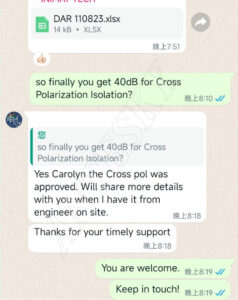
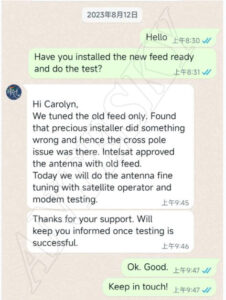
Customer feedback of Antesky 5.3m earth station antenna
After re-debugging by the customer engineer, the original feedback given to us is as follows:
# Tx carrier raised with mod -36 dBm and we got RX DMOD 2.4dB, no variation in RX signal level.
# We confirm it should be perfect and called to NOC and confirmed Cross pol isolation is OK and NOC remarked us tune antenna once again to peak signal. (co pl 49 dB, cross pol 9 dB)
Below is the installed antenna sent by the customer for reference.
5.3m earth station antenna on client site in Seychelles
Antesky 5.3m earth station antenna feed system
2. Earth station antenna polarization isolation operation
As we all know that after the antenna installation and debugging is completed, the next step is to test the antenna’s network access. This step is also extremely important. The most critical of these is the test of cross-polarization isolation. If the cross-polarization isolation is low, the satellite company cannot pass and will not be able to access the network.
For earth station antennas, polarization isolation is one of the important indicators to detect satellite access to the network. Once the system indicators are finely tuned by the antenna manufacturer, the performance is relatively fixed. This measurement generally requires the cooperation of the satellite operating company, so When a station encounters a situation such as satellite switching, it can contact the satellite company to send a single carrier signal on a frequency band that does not have anti-polarization services. The satellite company will use its reference antenna to assist users in debugging the antenna polarization angle. According to the principle of transceiver reciprocity, usually the best polarization angle for uplink polarization isolation is also the best polarization angle for downlink polarization isolation. The area where the customer is located needs to have a cross-polarization isolation of more than 35dB when connecting to the network according to eutelsat requirements.
The measurement of polarization isolation index can be completed by testing the antenna pattern with a spectrum analyzer. The basic method of using a spectrum analyzer to test the antenna pattern is to transmit a single carrier (CW) from the uplink station antenna, set the SPAN parameter of the spectrum analyzer to 0, set the scanning time according to the antenna rotation time, and then align and rotate the antenna according to the instructions. ,At the same time, a spectrum analyzer is used to record the changes in signal level during the rotation of the antenna. According to the rotation speed of the antenna, the time in the recording result is converted into an angle to obtain the antenna pattern.
Please click here for Antesky’s blog on cross-polarization isolation testing for specific test methods.
3. Eutelsat requirements for earth station antenna polarization isolation
Eutelsat requirements for earth station antenna polarization isolation
This requirements for polarization is excerpt from eutelsat document as below.
Earth Station Technical and Operational Requirements Standard M
EESS 502 – Issue 16 – Rev. 5
You can click eutelsat website to learn further details.
In the process of verifying the network access of satellites by earth station antennas, cross polarization isolation is a very important indicator. If the cross polarization isolation indicator does not meet the standard, not only will the transmission signal in the positive polarization direction be polarized attenuated, but its reverse polarity will also be attenuated. Polarization leakage signals will interfere with services on the reverse polarization band. For the receive only antenna, the polarization isolation index is unqualified. While receiving the positive polarization service, the antenna will receive a strong reverse polarization service signal, causing interference to the positive polarization reception signal and affecting the quality of the receiving service. Therefore, whether it is an earth station VSAT antenna or a receive only antenna, precise adjustment of polarization isolation is very important and necessary.
We hope this article will be helpful to you in antenna debugging. If you have any more questions, please feel free to communicate with us via sales@antesky.com. or you can send us message directly by WhatsApp.

